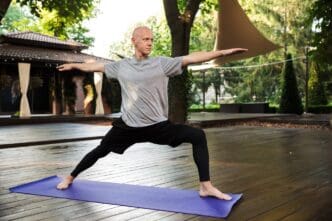A Quick Takeaway
The Story Behind the Trend
How to Make It Work for You
The Community View
Gear plays a pivotal role in a runner’s journey back from injury, offering essential support, facilitating recovery, and aiding in the prevention of recurrence. For runners aiming to return to their peak performance after a setback, selecting the right equipment is not merely about comfort but about strategically supporting the body’s healing process and building resilience. This article will explore the top gear choices that can significantly fuel your injury recovery, helping you run stronger and smarter, from immediate post-injury care through to a safe and sustainable return to the pavement or trail.
Understanding the Role of Recovery Gear
Injury recovery is a multifaceted process that extends beyond rest; it involves active rehabilitation, strengthening, and careful monitoring. The right gear acts as a crucial adjunct to professional medical advice and physical therapy, providing targeted assistance where the body needs it most. It can alleviate pain, reduce inflammation, improve circulation, and offer structural support.
Utilizing appropriate tools can accelerate healing, minimize the risk of re-injury, and foster confidence during the often-challenging return to running. However, it is paramount to consult with a doctor or physical therapist before incorporating any new gear, especially when dealing with a significant injury, to ensure it aligns with your specific recovery plan.
Support and Stability: Protecting Healing Tissues
During the initial stages of recovery or when gradually increasing activity, stabilizing injured areas is critical. This category of gear helps to protect vulnerable tissues, reduce excessive movement, and provide proprioceptive feedback, which is the body’s sense of its position in space.
Compression Wear
Compression socks, sleeves, and shorts apply graduated pressure to specific body parts, which can enhance blood flow and reduce muscle oscillation. This improved circulation aids in flushing out metabolic waste products and delivering oxygen and nutrients to healing tissues, potentially reducing swelling and muscle soreness after activity.
Braces and Taping
Depending on the injury, a doctor or physical therapist might recommend a brace for the ankle, knee, or wrist to limit movement and provide external stability. Kinesiology tape, when applied correctly, can support muscles and joints, reduce pain, and facilitate lymphatic drainage without restricting a full range of motion. It’s crucial to learn proper application techniques or have a professional apply it.
Active Recovery and Myofascial Release Tools
Maintaining tissue health and flexibility is vital for preventing stiffness and promoting efficient movement patterns. These tools empower runners to perform self-massage and release tight spots, which are common after injury or intense training.
Foam Rollers and Massage Balls
Foam rollers, in various densities, and smaller massage balls (like lacrosse balls) are excellent for myofascial release. By applying sustained pressure, they help to break up adhesions, improve tissue elasticity, and increase range of motion in muscles and connective tissues. Regular use can prevent scar tissue buildup and alleviate trigger points.
Percussion Massagers
High-frequency percussion massagers, often called massage guns, deliver rapid pulses to muscle tissue. This can increase blood flow, warm up muscles before activity, and aid in recovery by reducing stiffness and soreness post-workout. They are particularly effective for reaching deep muscle knots that are hard to access with traditional rollers.
Hot and Cold Therapy
The strategic application of heat and cold can significantly manage pain and inflammation. Ice packs or cold therapy devices reduce swelling and numb pain immediately after an injury or intense activity. Heat packs or warm baths, conversely, can relax tight muscles and improve blood flow, often used before stretching or light activity.
Smart Technology for Monitoring Progress
Tracking your body’s response to training and recovery is invaluable for a safe return to running. Wearable technology provides objective data that can guide your efforts and alert you to potential overexertion.
GPS Running Watches
Modern GPS watches do more than just track distance and pace; they can monitor heart rate, recovery metrics, and even suggest appropriate training loads. This data helps runners gradually increase mileage and intensity, avoiding sudden spikes that could lead to re-injury.
Heart Rate Monitors
Monitoring your heart rate, especially during lower-intensity recovery runs or cross-training, ensures you stay within prescribed zones. This prevents overtraining and allows your body to adapt and heal effectively. Some watches have integrated optical heart rate sensors, while chest straps offer greater accuracy.
The Foundation: Proper Footwear
For runners, footwear is perhaps the most critical piece of gear, both for preventing injuries and supporting recovery. Your shoes are your primary interface with the ground, influencing impact absorption, stability, and biomechanics.
During recovery, it’s essential to ensure your running shoes provide adequate support and cushioning for your foot strike and gait. A running shoe specialist can assess your needs, especially if your gait has changed due to injury or compensatory movements. Sometimes, a temporary change in shoe type, such as a more cushioned or stable model, can aid recovery.
Cross-Training Essentials for Rebuilding Strength
Injury recovery often involves a period of reduced or no running, during which cross-training becomes paramount. This gear supports non-impact activities that build strength, improve cardiovascular fitness, and maintain muscle tone without stressing the injured area.
Resistance Bands
Resistance bands are incredibly versatile for strengthening muscles around the injured area and improving overall body stability. They come in various resistances and can be used for a wide range of exercises, from glute activation to hip strengthening, crucial for many running-related injuries.
Stability Balls and Balance Boards
These tools are excellent for improving core strength, balance, and proprioception, which are often compromised after injury. Incorporating exercises on unstable surfaces can help re-educate muscles and joints to work together effectively, crucial for preventing future injuries.
Building a Resilient Runner
While the right gear can significantly fuel your injury recovery and help you run stronger, it is merely one component of a holistic approach. It acts as an aid, not a cure, and should always be used in conjunction with professional guidance, a structured rehabilitation plan, and attentive listening to your body. By strategically integrating these top gear choices, you can create an environment that optimizes healing, minimizes risk, and empowers a confident, sustainable return to the sport you love.








